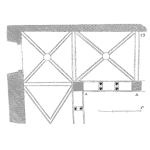
Your team has put together the Statement of Requirements (SoR) for the new completion tool wand it contains the target ratings. But the product must have a 10-year minimum service life at maximum rated operating conditions. And reliability expectations are high. Also, the product has electromechanical content and must have operational redundancy and allow contingency operation. However, there are no requirements for these in the SoR.
Is this SoR good enough? If this were 1990, then perhaps yes. But it is inadequate for today’s upstream market. One way to remedy this is to use the SoR to capture “womb-to-tomb” requirements for the product. This ensures that the product not only meets performance expectations today but will also respond predictably to operational inputs over its service life.
Handling, storage, and preservation. What must the product withstand after crating at the factory? Is the product always going to be stored in a warehouse? If not installed immediately, what preservation practices must the end-user implement?

Reliability. What are the reliability requirements? Which configuration will be used? What are the DfR activities?
Failure and redundancy. Are all failure modes known? Is product response known for each mode? What redundancy(s) should the product have? Fail-Safe Operation. Should the product be able to operate in a fail-safe mode? Which position or operating mode is preferred for fail-safe operation?
Laboratory testing confirms product ratings, but product response throughout service life must also be known. End-users may not always honor OWS but knowing how the product responds in certain situations during its service life enhances well planning and decision-making.
TRUTH: A womb-to-tomb SoR leads to product predictability and OEM credibility.
This is the 2nd of six articles on Design for Reality for downhole tools and systems.
Leave a Reply